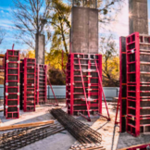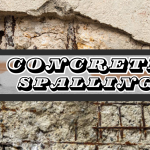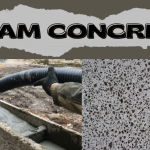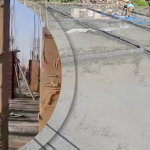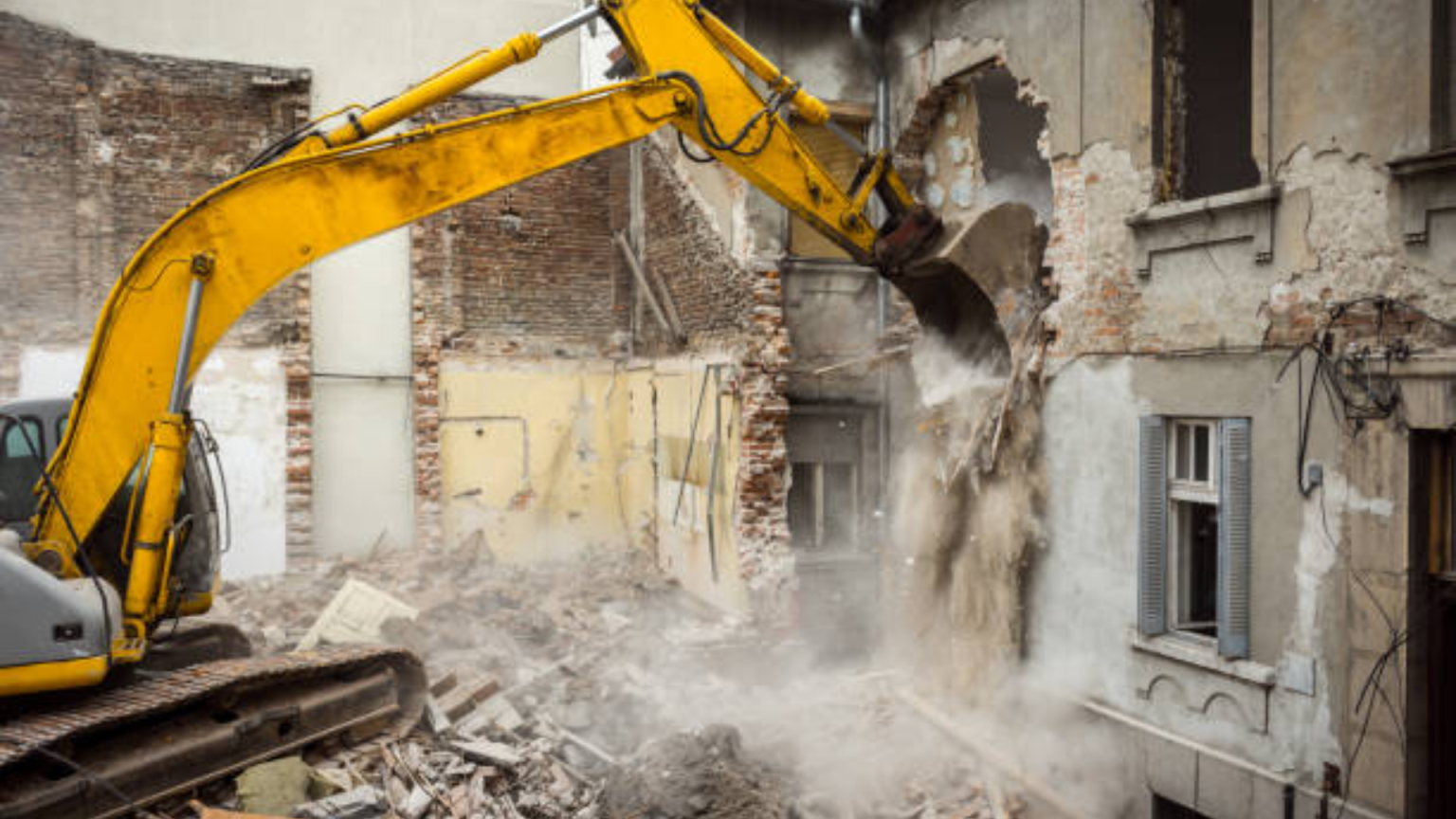
In this article, we will explore various demolition techniques commonly used in the construction industry. Additionally, we will emphasize the importance of safety measures during demolition to protect the well-being of workers, the public, and the surrounding environment. Understanding these techniques and safety practices ensures that demolition projects are conducted efficiently, responsibly, and with minimal risk to all stakeholders involved.
What is Demolition?
Demolition is the process of intentionally and systematically tearing down or dismantling structures, buildings, or other man-made objects. It is typically carried out to remove old or unsafe structures, clear space for new construction, or for renovation purposes. Demolition can range from small-scale projects, such as the removal of a single building, to large-scale operations involving the dismantling of entire complexes or industrial facilities.
Demolition can be a complex and hazardous task, especially when dealing with large or tall structures, so it typically involves the use of specialized equipment, machinery, and techniques. Professionals in the construction and demolition industry are responsible for carrying out these tasks, and they follow specific protocols to ensure the safety of workers, bystanders, and neighboring properties.
The demolition process may include:
Initial Assessment
Before commencing demolition, a thorough assessment of the structure is conducted to identify potential hazards, materials present (e.g., asbestos), and the most suitable demolition method.
Permits and Regulations
Obtaining the necessary permits and complying with local regulations and safety standards is an essential step before starting any demolition project.
Site Preparation
Preparing the site involves disconnecting utilities, removing hazardous materials, securing the area, and setting up safety barriers.
Demolition Method Selection
Choosing the appropriate demolition method based on the structure’s size, location, proximity to other buildings, and environmental considerations
Demolition Techniques
Depending on the method selected, various techniques such as implosion, mechanical dismantling, deconstruction, etc., may be employed.
Safety Measures
Implementing safety protocols, using protective gear, and following engineering plans to minimize risks during the demolition process.
Environmental Considerations
Managing debris, recycling materials when possible, and disposing of waste responsibly to reduce the impact on the environment.
Debris Removal
Clearing the site of debris and properly disposing of the materials, either by recycling, reusing, or sending them to appropriate landfills.
Site Clean-Up
Thoroughly cleaning the site to ensure it is safe and ready for any future development or construction.
Also Read: Types of Cranes Used in Construction | Construction Barrier | Personal Protective Equipment | Hard Hat Color Codes
Demolition projects can vary greatly in scale and complexity, from small residential buildings to large industrial structures. The process requires careful coordination and collaboration among different professionals, including structural engineers, demolition contractors, waste management experts, and regulatory authorities.
It’s essential to emphasize that demolition should always be carried out by qualified and experienced professionals to ensure safety, efficiency, and compliance with all relevant laws and regulations.
Demolition Techniques
Demolition refers to the process of tearing down or destroying structures, buildings, or other man-made objects. There are several demolition technique used, depending on the size, location, and purpose of the demolition. Here are some common demolition techniques:
Manual Demolition
Manual demolition refers to the process of dismantling or destroying structures, buildings, or other man-made objects using manual labor and hand tools, without the use of heavy machinery or explosives.
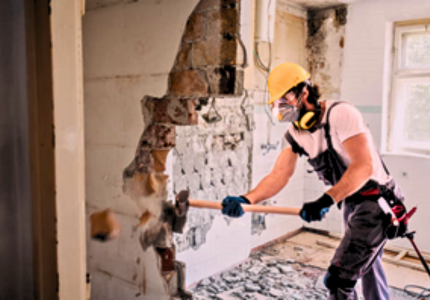
This traditional method of demolition involves physically breaking down materials and structures piece by piece, typically using hand tools such as hammers, chisels, pry bars, axes, and saws. Manual demolition requires physical effort and skilled labor to carefully dismantle the building or structure piece by piece.
Implosion Demolition
This method involves using explosives to collapse a building inward on itself. Careful planning and engineering are required to ensure the building collapses safely within its footprint. Implosion demolition is often used for tall buildings in urban areas where there is limited space for debris to fall.
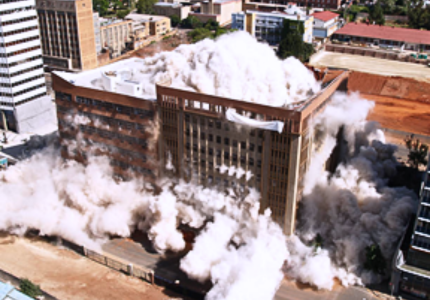
Selective Demolition
Selective demolition, also known as deconstruction or dismantling, is a demolition technique that involves carefully and systematically removing specific portions of a structure while preserving valuable or reusable materials.
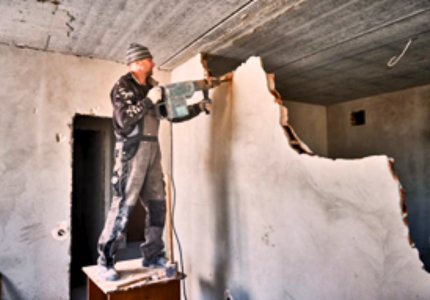
Unlike traditional demolition methods that involve the complete destruction of a building, selective demolition aims to salvage components and materials for reuse or recycling, reducing waste and minimizing the environmental impact of the demolition process.
Mechanical Demolition
This type of demolition involves using heavy machinery like excavators, bulldozers, cranes, and wrecking balls to mechanically dismantle and tear down the structure. It is often used for smaller buildings or structures made of concrete, steel, or wood.
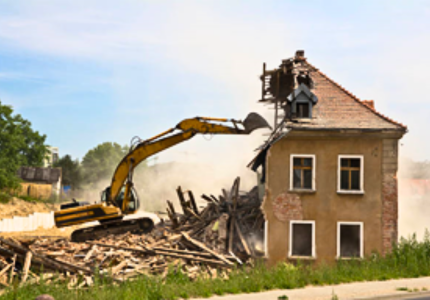
Explosive Demolition
Similar to implosion demolition, explosive demolition uses controlled explosions to bring down a structure. However, explosive demolition is generally used for larger and more complex structures.
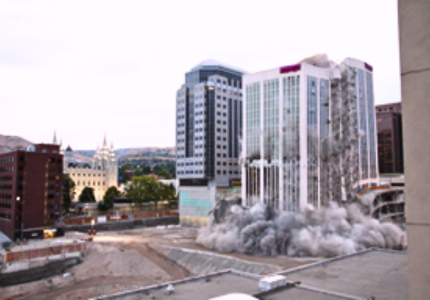
High Reach Arm Demolition
This method uses excavators with extended arms (booms) equipped with specialized attachments like shears or grapples to demolish structures from a distance. It allows for controlled demolition while keeping the operator at a safe distance
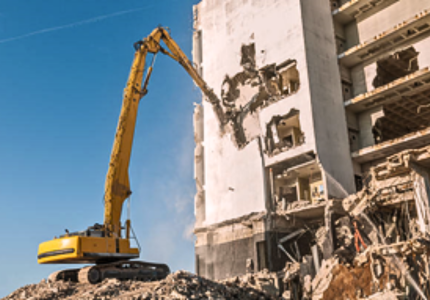
Ball and Crane Demolition
In this method, a wrecking ball is attached to a crane and swung into the structure to knock down walls or sections. While it was commonly used in the past, it’s less common now due to its lack of precision compared to other methods.
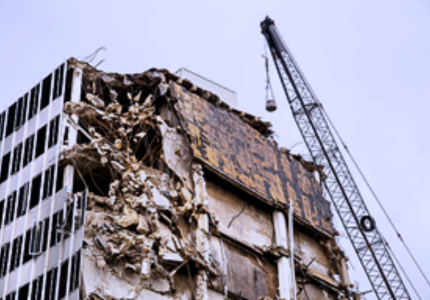
Safety Precaution during Demolition
During demolition, safety precautions are essential to protect the well-being of workers, the public, and the environment. Demolition sites can be hazardous environments with potential risks of structural collapse, falling debris, exposure to hazardous materials, and other dangers. Here are some important safety precautions to take during demolition:
Site Inspection and Assessment
Conduct a comprehensive site inspection before starting demolition to identify potential hazards, including structural weaknesses, unstable areas, hazardous materials, and utilities.
Proper Planning and Engineering
Develop a detailed demolition plan and obtain the expertise of structural engineers to ensure safe and controlled demolition techniques are used.
Compliance with Regulations
Ensure that all demolition activities comply with local, state, and federal safety regulations, building codes, and environmental guidelines.
Training and Competency
Ensure that all workers involved in the demolition project are properly trained and competent in their tasks. This includes training on the use of equipment, safety procedures, and emergency protocols.
Utilities Disconnect
Ensure all utilities, such as water, gas, electricity, and sewage, are safely disconnected before starting the demolition.
Personal Protective Equipment (PPE)
Require all workers to wear appropriate personal protective equipment, including hard hats, safety goggles or face shields, gloves, steel-toed boots, and respiratory protection (if needed).
Barrier and Signage
Secure the demolition site with barriers and fences to prevent unauthorized access by the public. Use warning signs to alert people of the ongoing demolition work.
Dust and Air Quality Control
Implement measures to control dust and airborne particles generated during demolition. Use water hoses, dust suppression systems, or appropriate ventilation to protect workers and nearby residents from inhaling harmful substances.
Controlled Demolition Techniques
Use controlled demolition techniques, such as mechanical dismantling or explosive demolition, only when necessary and when performed by trained professionals.
Emergency Procedures
Establish clear emergency procedures, including evacuation routes, communication methods, and first-aid stations, in case of accidents or unexpected situations.
Communication and Coordination
Maintain effective communication among all team members and ensure clear coordination between demolition crews, equipment operators, and supervisors.
Weather Considerations
Be aware of weather conditions that may impact safety, such as high winds or heavy rain, and take appropriate precautions.
First Aid and Medical Facilities
Have first-aid kits readily available on-site, and ensure that there is access to medical facilities in case of injuries.
Material Salvage and Waste Management
Properly manage debris and waste, segregate hazardous materials, and salvage reusable items for recycling or donation.
Asbestos and Hazardous Materials Handling
If the structure contains hazardous materials like asbestos, follow strict guidelines for their safe removal and disposal.
By prioritizing safety and implementing these precautions, demolition projects can be conducted in a manner that minimizes risks and ensures the protection of all individuals involved. It is essential to have a strong safety culture on-site, where safety is emphasized and practiced at all times.

